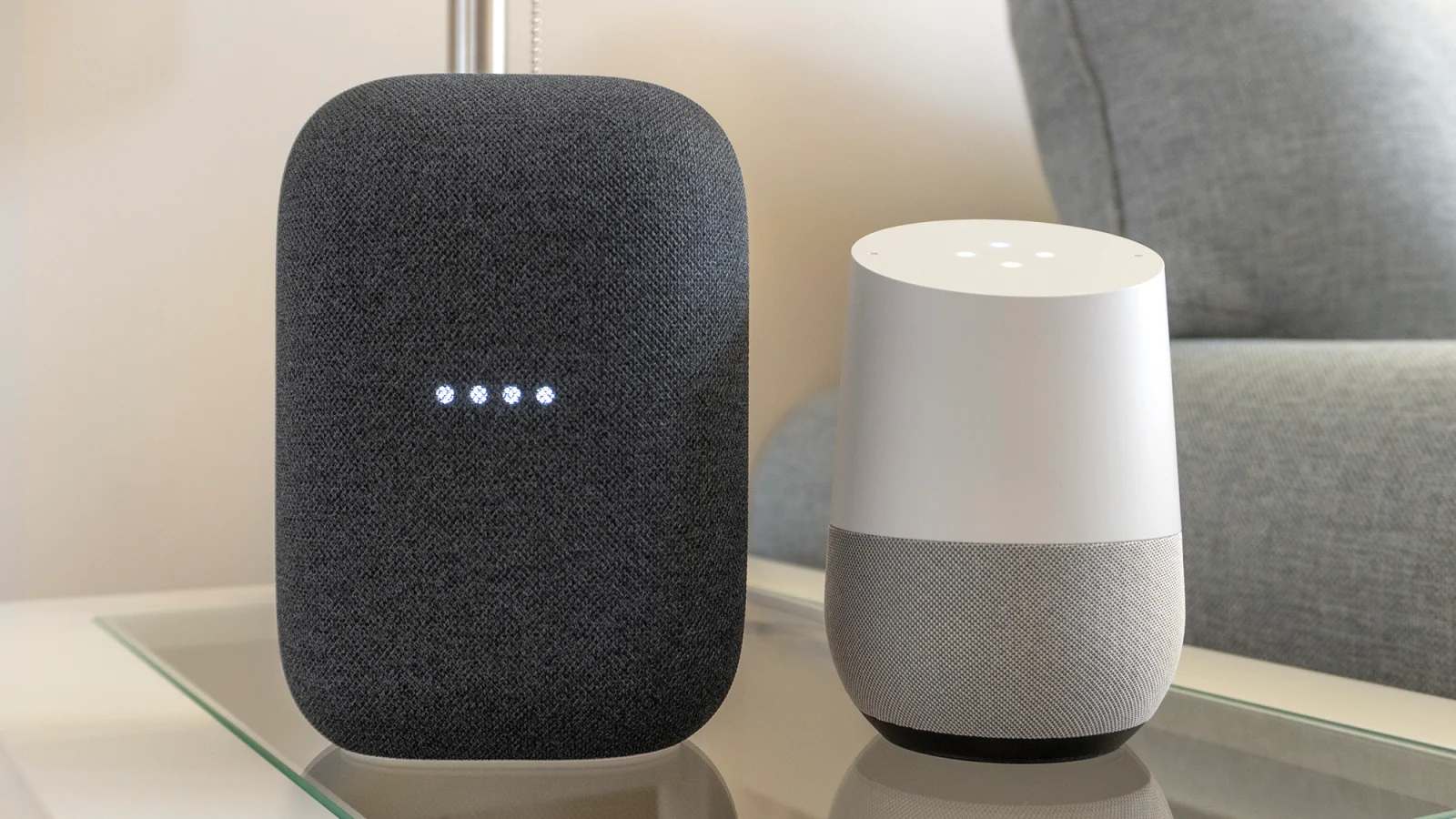Table of Content
The first device, Google Home, was released in the United States in November 2016; subsequent product releases have occurred globally since 2017. Feature vectors of a received speech input may also be buffered in buffer 103 to be used by other component during subsequent processing. The number of speech inputs or utterances for which speech vectors are buffered may be limited because of computational load requirements or privacy protection. The buffered feature vectors are used to collect enough utterances for reliable detections, for example, for speaker change recognition for which particularly one or more directly preceding utterances are employed. The method may comprise comparing a speaker model in the speaker model set before and after the adapting step according to a predetermined criterion. This comparing step may comprise determining a distance of the speaker model before and after the adapting step.
However, the present invention is particularly useful in case of short utterances such as having a length of less than 3 seconds. Wirecutter is the product recommendation service from The New York Times. Our journalists combine independent research with over-the-top testing to save people time, energy and money when making buying decisions. Whether it's finding great products or discovering helpful advice, we'll help you get it right .
Roku TV Wireless Speakers Review: Should You Buy Them?
The Sonos multiroom music platform offers the best-sounding speakers, supports the widest variety of streaming services, and is easy to set up and use. Google representatives replied that while no third-party software is allowed to run on the Home, all software is validated through a cryptographically verified secure-boot process before it runs on the device. If any software is tampered with, the cryptographic signature verification will prevent the software from loading and stop the Home from operating. Google also cryptographically protects all communications between the Home and Google cloud services.

Ron Amadeo of Ars Technica praised Google Home's setup process and its ability to pick up voice commands even from a distance, calling the latter "absolutely incredible". Additionally, in his summary, he wrote that "Why pay $129 for a device that is less capable than an Android phone?". During its October 4, 2017 event, Google unveiled the Google Home Max, which was released on December 11, 2017.
Find Speakers with Google Assistant
These different decisions and determinations may be obtained in several ways. For example, different parameters received from a different component may be combined in a predetermined way, for example, using predefined weights. Alternatively, a neural network may be provided to which these parameters are passed and which outputs the corresponding decisions and determinations. Therefore, the a posteriori probability of GMM λ1 is reduced due to the uncertainty of the given feature vector with respect to the classification into speaker or background noise. This results in a further parameter of the speaker adaptation control. The covariance matrices need not be fused as only the weights and mean vectors are adapted in the MAP algorithm.
It's limited compared to other smart displays because it won't show you any videos, and there's no camera for video calling. Lenovo added the ability to see albums from Google Photos, and you can still see visual responses, like when you ask it the weather, but it prioritizes the clock, so you can reliably see the time when you wake up in the morning. If you use it to set alarms, it will eventually start suggesting alarm times.
Which voice control system is best for your home? Google or Amazon?
Steve said "Hey, Google" and I followed with "what's my name?" Google responded with Steve's name. Additionally, another coworker was successfully able to impersonate my voice. If you have paired two speakers to work together, like two Nest Minis, then only the left speaker will listen for voice commands. Speak commands to Google from across the room with improved voice recognition. Google Home devices are powered by Google Assistant, a voice-activated assistant that can do various tasks, such as providing information about the weather or setting reminders.
Two-factor authentication isn't foolproof, but it does add a layer of security that makes breaking into your online accounts more difficult. Under Activate Voice Match on this device tap the box labeled I agree, then scroll to the bottom of the next screen and tap the next box with I agree. Facial recognition technology has come under fire from privacy advocates, but it can also be used to help secure your data. Protect your privacy on Google Home right now with these crucial steps.
Then, the predetermined criterion may be based on the determined likelihood for a speaker change and for no speaker change. In particular, the predetermined criterion may be based on the difference of the likelihood for a speaker change and the likelihood for no speaker change. The invention is directed to a method and an apparatus for speaker recognition based on a received speech input, and to a method and apparatus for recognizing a received speech input. Complicating our blind test was the fact that the Google Home plays only material sourced through the Internet, which meant Brent would have to use voice commands to cue up the music for the test.

It can be paired to a better speaker over Bluetooth, however, and still has complete Google Assistant functionality. Of securing an online account, but it's miles better than nothing at all. Having two-factor set up on Google Home means if anyone were to try to, say, set up a Google Home smart speaker using your stolen login info, they'd likely be thwarted unless they had also lifted your smartphone. The point is that it won't hinder nor degrade your experience using Google Home, so there's really no reason not to set it up. We were able to get Google to respond to a recording of Steve's voice -- the voice recognition is based on the wake words, so someone could access your info if they had a clip of you saying "OK, Google." We tried splitting up commands.
In this case, the predetermined criterion may additionally be based on a distance measure, such as a Kullback-Leibler entropy or a cross-correlation of the two speaker models. In particular, the method may comprise fusing or combining two speaker models of the speaker model set. For example, different speech models and/or vocabularies may be provided, trained and/or adapted for different speakers during use of the speech recognition method. Furthermore, as speech control in many cases consists of short utterances, an increased recognition reliability is desirable. The detecting step may comprise performing feature extraction on the received speech input. Performing feature extraction may comprise determining a feature vector, pitch and/or signal-to-noise ratio.
Additionally, a speaker change recognition may be performed to obtain a measure for no speaker change. Then, the predetermined criterion may additionally be based on the no speaker change measure. Prior art speaker recognition systems as mentioned above, however have the drawback that an extensive training has to be performed in advance in order to obtain the necessary speech samples and/or speaker models. For different applications such as speech recognition, distinguishing between different speakers might provide useful but providing any prior training is undesirable. Optionally, a model fusion step 206 may be performed in model fusion component 107. In this step, the distance between two speaker models are determined to identify two speaker models belonging to a same speaker.
Over time, the gap between the two will continue to slim, but as of now, Google Assistant is still further ahead. It's one of the best midrange Google speakers around, and it's a step up from the original Google Home. It's powerful enough to play music, and there's something charming about it. I particularly like the 10 light-up orbs to display volume—a step up from the four orbs on most Google speakers, like the Nest Mini. The Assist isn't the best-sounding speaker, but I keep it around anyway. The Bose Portable Home Speaker is for people who want a take-anywhere speaker that prioritizes sound quality.

On July 10, 2019, a report published by Belgian broadcaster VRT NWS managed to gain access to more than a thousand audio excerpts recorded by Google Assistant in Belgium and the Netherlands. The audio files were sent to Google employees to develop Google Assistant's speech technology. According to the VRT NWS report, 153 of the 1,000 audio files should have never been recorded and during which the command "OK Google" was clearly not given.
If you play your music loud, the Echo’s voice recognition might work a little better for you. However, Brent also found that the Home did a better job of recognizing voices while pink noise played from a nearby Bluetooth speaker . Coincidentally, the Home could hear commands at levels -2.75 dB lower than the Echo through the same noise level.
The steps of determining a speaker change measure and of determining a speaker identification measure may, but need not be based on the same speaker model. According to one aspect, both determination steps may be based on speaker models in form of Gaussian mixture models. The method may comprise determining two consecutive speech segments and performing the speaker change recognition with respect to the speech segments. The speech segments may both be part of the received speech input; alternatively, the received speech input may be considered as one speech segment and a preceding speech input as another speech segment. Performing the speaker change recognition may comprise adapting the speaker-independent model to each of two consecutive speech segments and to a unification of the two consecutive speech segments.


No comments:
Post a Comment